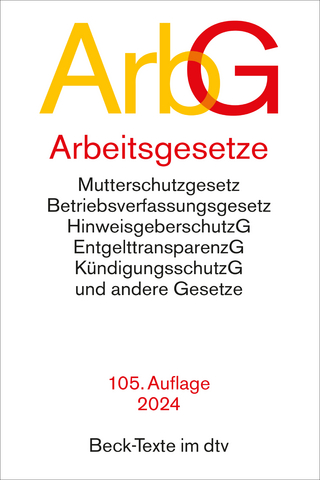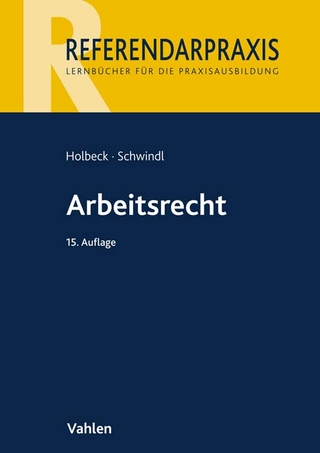
The Cambridge Handbook of U.S. Labor Law for the Twenty-First Century
Cambridge University Press (Verlag)
978-1-108-42883-5 (ISBN)
Over the last fifty years in the United States, unions have been in deep decline, while income and wealth inequality have grown. In this timely work, editors Richard Bales and Charlotte Garden - with a roster of thirty-five leading labor scholars - analyze these trends and show how they are linked. Designed to appeal to those being introduced to the field as well as experts seeking new insights, this book demonstrates how federal labor law is failing today's workers and disempowering unions; how union jobs pay better than nonunion jobs and help to increase the wages of even nonunion workers; and how, when union jobs vanish, the wage premium also vanishes. At the same time, the book offers a range of solutions, from the radical, such as a complete overhaul of federal labor law, to the incremental, including reforms that could be undertaken by federal agencies on their own.
Richard Bales is Professor of Law at the Claude W. Pettit College of Law, Ohio Northern University and Visiting Professor at University of Akron from 2018 to 2020. He has published more than eighty scholarly articles and authored or co-authored six books on arbitration, ADR in the workplace, employment law, and labor law. Charlotte Garden is Associate Professor at the School of Law, Seattle University, where she teaches labor, employment, and constitutional law. She has published numerous law review articles focusing on the legal status and rights of unions and workers, and she co-authors two leading labor and employment law casebooks.
List of contributors; Preface; Acknowledgements; Part I. Introduction: 1. Union trends Richard Bales; 2. The consequences of union decline Jake Rosenfeld; Part II. Labor Law Is Out of Date: 3. Yesterday's labor law and today's challenges Cynthia Estlund; 4. The National Labor Relations Board in the twenty-first century William B. Gould, IV; 5. Beyond the race to the bottom: reforming labor law preemption to allow state experimentation Charlotte Garden; 6. Union rights for all: towards sectoral bargaining in the United States Kate Andrias; 7. Public sector innovations: valuing voice Ann C. Hodges and Martin H. Malin; 8. Combatting union monopoly power: the contrast between pre- and post-new deal legal regimes Richard A. Epstein; 9. The case for repealing the firm exemption to antitrust (a modest proposal; or, a response to Professor Epstein) Sanjukta Paul; 10. Make labor organizing a civil right Richard Kahlenberg and Moshe Marvit; Part III. The 'Fissured' Workplace: 11. Some problems with NLRA coverage: independent contractors and joint employers Joseph Slater; 12. Reinventing employers Jeffrey Hirsch; 13. The problem of 'misclassification' or how to define who is an 'employee' under protective legislation in the information age Kenneth G. Dau-Schmidt; 14. Rupture and invention: the changing nature of work and the implications for social policy Katherine V. W. Stone; 15. Contemplating new categories of workers: technology and the fissured workplace Miriam A. Cherry; 16. Balancing flexibility and rigidity: do unions make sense in the on-demand economy? Seth Oranburg and Liya Palagashvili; Part IV. Barriers to Forming a Collective Bargaining Relationship: 17. Tactical mismatch in union organizing drives Charlotte Garden; 18. The power of place Michael M. Oswalt; 19. Assembly and collective rights Marion Crain; 20. Leveraging secondary activity within and outside legal boundaries Anne Marie Lofaso; 21. Captive audience meetings: the right not to attend Paul M. Secunda; Part V. Barriers to Bargaining a Good Contract: 22. Obtaining a first contract after winning recognition David Rosenfeld; 23. Advancing global labor standards: potential and limits of international labor law for worker-rights advocacy in the United States Lance Compa; 24. Organizing for workplace rights when immigration law discourages it Leticia M. Saucedo; 25. The central role of the right to strike Julius Getman; 26. Organizational power for workers within the firm Matthew T. Bodie; 27. Returning members-only collective bargaining to the American workplace: how to restore labor's countervailing power Charles J. Morris: Part VI. Unions, Civil Society, and Culture: 28. Can labor law reform encourage robust economic democracy? Brishen Rogers; 29. Union security for the twenty-first century Catherine L. Fisk; 30. Union membership and the Ghent system Matthew Dimick; 31. Principled hope: labor law reform from an alt-labor perspective Cesar F. Rosado Marzan; 32. Politically engaged unionism: the culinary workers union in Las Vegas Ruben J. Garcia; 33. Union commitment to racial diversity Michael Z. Green; 34. The economics of minimum wage regulations Jesus Fernandez-Villaverde; 35. The role of labor research and education in the labor movement of the twenty-first century: the UCLA Labor Center and the CLEAN Carwash Campaign Victor Narro; Index.
| Erscheinungsdatum | 05.12.2019 |
|---|---|
| Reihe/Serie | Cambridge Law Handbooks |
| Zusatzinfo | Worked examples or Exercises; 1 Halftones, black and white; 1 Line drawings, black and white |
| Verlagsort | Cambridge |
| Sprache | englisch |
| Maße | 184 x 260 mm |
| Gewicht | 940 g |
| Themenwelt | Recht / Steuern ► Arbeits- / Sozialrecht ► Arbeitsrecht |
| Recht / Steuern ► EU / Internationales Recht | |
| Sozialwissenschaften ► Politik / Verwaltung | |
| Wirtschaft ► Volkswirtschaftslehre ► Makroökonomie | |
| ISBN-10 | 1-108-42883-5 / 1108428835 |
| ISBN-13 | 978-1-108-42883-5 / 9781108428835 |
| Zustand | Neuware |
| Haben Sie eine Frage zum Produkt? |
aus dem Bereich


